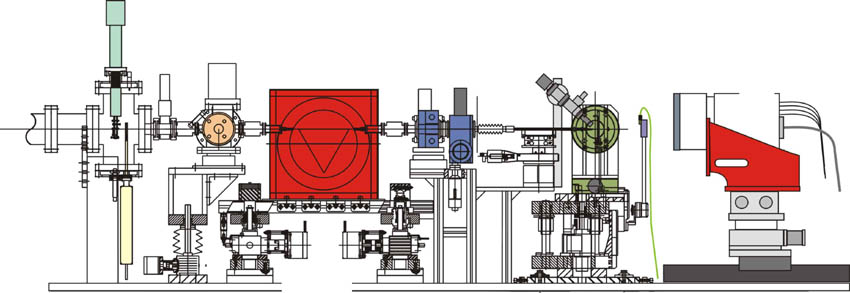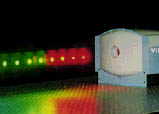ID09 Overview
General Principle
The aim of this beamline is to study ultrafast structural changes in condensed matter. The pulsed structure of the synchrotron radiation makes it possible to reduce the time resolution to about 100 ps, which is the length of an electron bunch within the storage ring. By means of a special streak camera the time resolution can be even reduced further below 1 ps.
The most favorable systems to be studied are structural changes that can be initiated e. g. by a short light pulse and represent reversible reactions, that reach the initial state after some relaxational time delay. However also irreversibe reactions could be studied within the same time resolution provided the sample can be replaced continuously within two subsequent excitation and scattering events.
This technique is well known in optical pectroscopy as pump-and-probe experiments, the unique thing being here a x-ray flash as probe signal.
Important systems that can be studied represent reversible changes in single crystals (biological macromolecular crystals, charge transfer systems in the solid state) or disordered photosensitive molecules in solution.

The x-ray flashes that exit the insertion devices at the beginning of the beamline are formed spatially (slits, focussing by toroidal mirror) and in spectrum (primary slits, monochromator, mirror) to enter the experimental hutch. A set of fast shutters and a rotative chopper are employed to extract x-ray pulses or pulse trains that are suitable for the desired time scales of the structural reaction.
The fastest repetition rate is set to the maximum repetition rate of the laser system with about 900 Hz (in the case that the detector itself is not time resolving). For slower relaxations this repetition frequency can be lower down to real single pulse extraction from the system.
The sample is normally excited by a short laser flash. The femtosecond laser system is connected to the synchrotron bunch clock in such way that the laser pulses are emitted synchronously to the x-ray pulses.
With means of a fast timing diode and timing electronics a fixed delay between laser and x-ray pulses can be set with a jitter considerably lower that a x-ray pulse length.
A detector can accumulate the scattered signal from the sample for a series of excitation events. This can conist of a two-dimensional high resolution detector or likewise be a fast point detector.
Optics hutch
 clickable map of the beamforming elements
clickable map of the beamforming elements
Experiments hutch
 clickable map of the parts in the experiments setup
clickable map of the parts in the experiments setup
Laser setup




